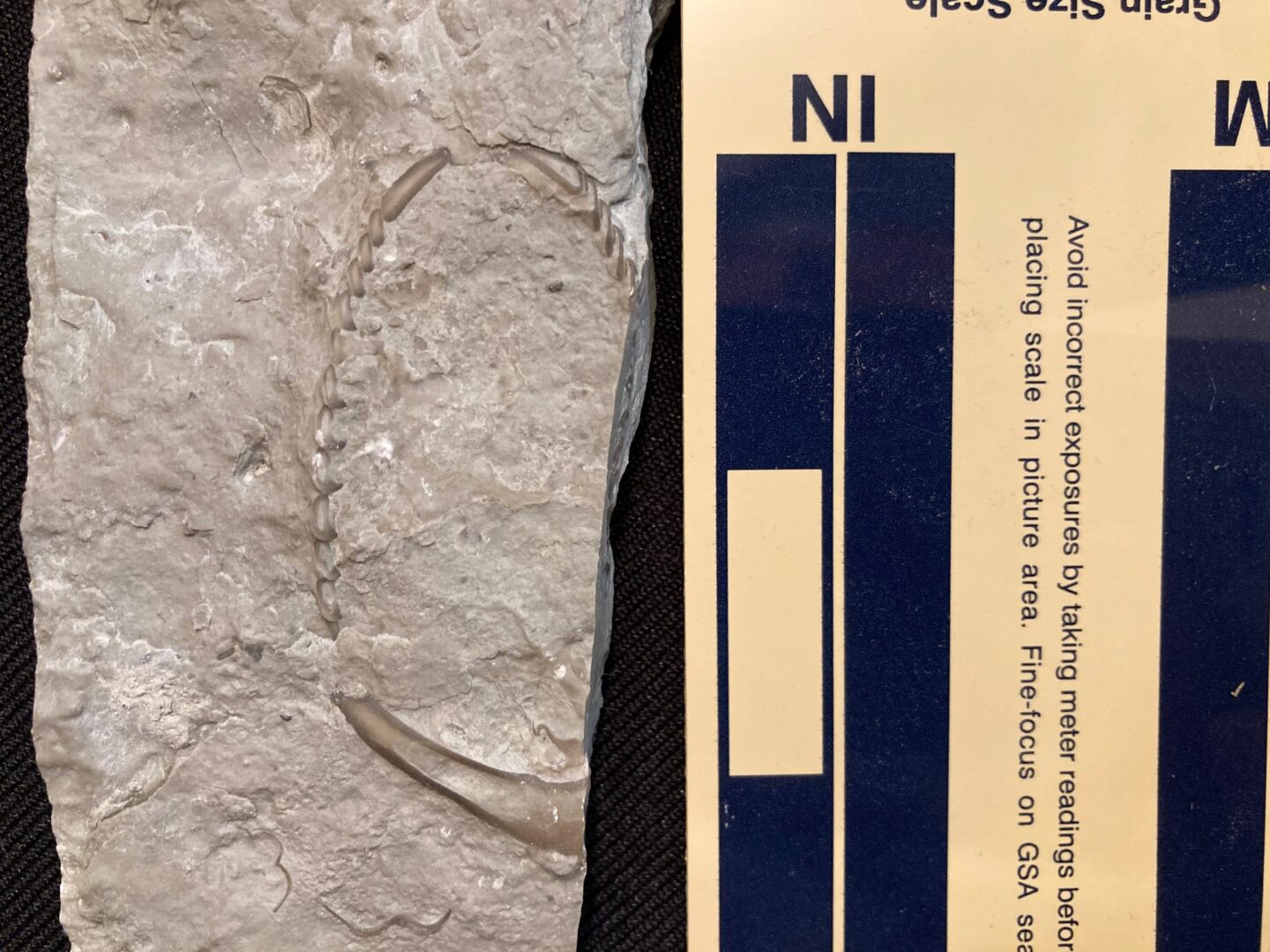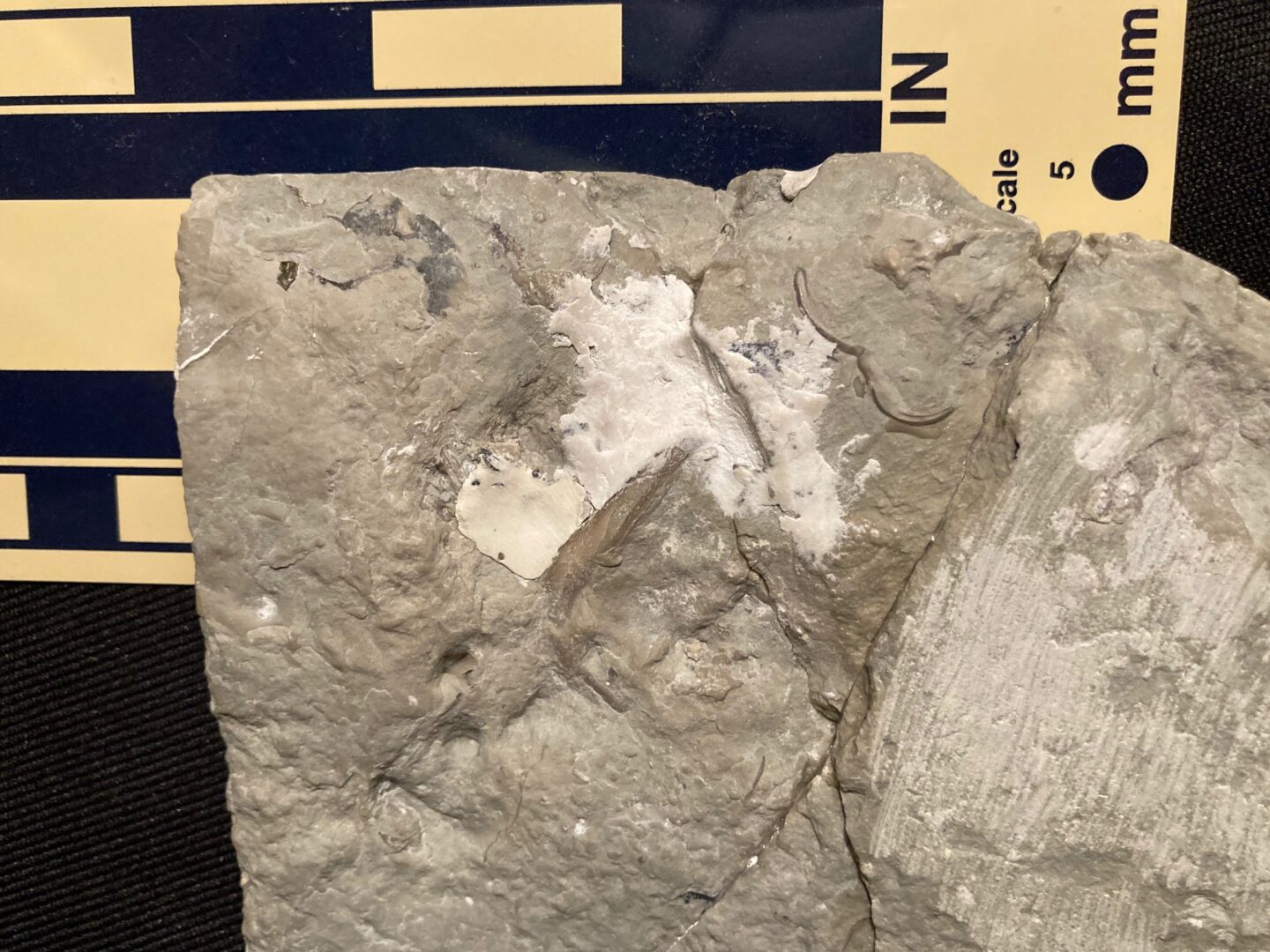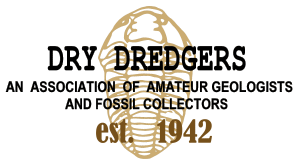I have written about this rare trilobite previously on this blog site and in the Dry Dredgers Bulletin. Thought I’d share a recently prepped specimen.
However, I’ll start with a picture of a heart-breaking find in the field (commercial crushed rock quarry). See Figure 1. This specimen had clearly been complete, but it unfortunately did not survive the mining process. So even though the rock (bioherm) is hard, it will break when dug up by a front-end loader, dumped into a haul truck, and poured onto a spoil pile.

I visited the spoil pile that produced this partial specimen several times over the following 6-months. I surface collected the area, anticipating that rain would have exposed the other half of this Spath. I dug bioherms out of the pile looking for it. Sadly, no luck. And now that pile is no longer available since it’s buried deep under other mining scrap dirt and rock. Just one of those disappointments in the relentless search for trilobites.
Yet here’s a collecting story with a far better outcome. Several years ago, I found a cracked rock revealing just the underside of the articulated cheeks of a Spathacalymene. See Figure 2. I couldn’t determine if the remainder of the trilobite might still be buried in the rock based on what little was exposed. Knowing that this type of rock is extremely hard and difficult to work, I eventually asked Ben Cooper to determine if the entire bug was there. And if so, please prep it, as he has done for several other trilobites from the locality.

This short story, as you must realize, has a great reveal, otherwise I wouldn’t bother to write about it. So, see the finished trilobite in Figure 3. It is a perfectly prone and completely articulated specimen. The protrusion on the anterior margin (the “snout”) is symmetrical. And the natural brown color contrasts nicely with the lighter-colored matrix. Ben did a fantastic job of exposing and prepping it! Thanks, Ben!
Of course, this great ending is rarely the case. Most exposed cheeks and other trilobite parts turn out to be just that: parts. But the Spathacalymene shown in Figure 3 did turn out to be a “keeper.” It now resides permanently in my collection and will go on display in a future GeoFair (Cincinnati Show).

Don Bissett

A long-time member of the Dry Dredgers, I’ve been collecting fossils ever since moving to Cincinnati in 1975 to work at P&G. I was introduced to fossil collecting by Bruce Gibson, another Dry Dredger and co-worker at P&G. Shortly after that, I met Dredger Dan Cooper. Both of them taught me a lot about the hobby. Ever since, I’ve been hooked on fossils.
My primary focus is collecting trilobites and echinoderms, though I often find myself accumulating a much wider assortment of fossils. Beyond the collecting hobby, I’ve also had the opportunity to work with professional paleontologists – extremely rewarding experiences. Some of those have been described in Dry Dredger Bulletin articles, MAPS (Mid-American Paleontology Society) articles, and technical publications. I plan to share more about collecting and professional interactions in my blog posts.Latest posts by Don Bissett (see all)
- Massie Shale Calymene - January 4, 2021
- Mississippian starfish - November 13, 2020
- Walcott-Rust Starfish - October 25, 2020
- Spathacalymene - September 20, 2020
- Penn Dixie Dig with the Experts 2018 - May 27, 2018




